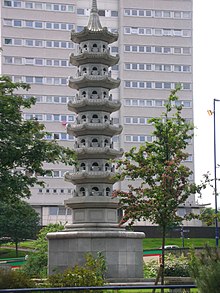Balsall Heath is an inner-city area of Birmingham, West Midlands, England. It has a diverse cultural mix of people and is the location of the Balti Triangle.
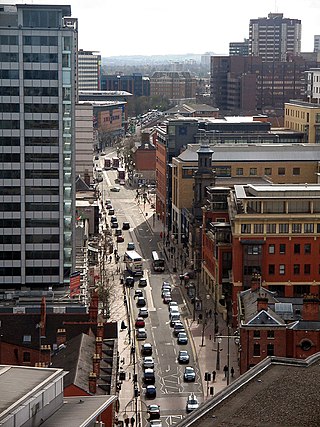
Broad Street is a major thoroughfare and popular nightspot centre in Central Birmingham, England. Traditionally, Broad Street was considered to be outside Birmingham City Centre, but as the city centre expanded with the removal of the Inner Ring Road, Broad Street has been incorporated into the new Westside district of the city centre due to its position within the A4540 road.

Wing Yip is a Chinese supermarket chain founded by Woon Wing Yip in England in 1970. The original Birmingham store now also serve as its headquarters, international trading division, property investments, online store, warehouse, and national distribution centre. The company has superstore branches in Manchester, Croydon and Cricklewood.

Chinatown is a subzone and ethnic enclave located within the Outram district in the Central Area of Singapore. Featuring distinctly Chinese cultural elements, Chinatown has had a historically concentrated ethnic Chinese population.

Hurst Street is the main street of the Birmingham Gay Village and is located along the edge of the Chinese Quarter of Birmingham, England.
As with any large town or city, food and drink has played an important role in the commerce and culture of Birmingham, England.

The Gun Quarter is a district of the city of Birmingham, England, which was for many years a centre of the world's gun-manufacturing industry, specialising in the production of military firearms and sporting guns. It is an industrial area to the north of the city centre, bounded by Steelhouse Lane, Shadwell Street and Loveday Street.
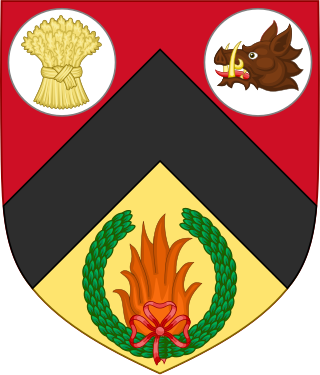
University College Birmingham is a university in Birmingham, England. It was awarded full university status in 2012 along with Newman University. It is not a member of Universities UK. The university was awarded 'University of the Year' in the 2022 WhatUni Student Choice Awards, as well as coming first in the 'Student Support' category.
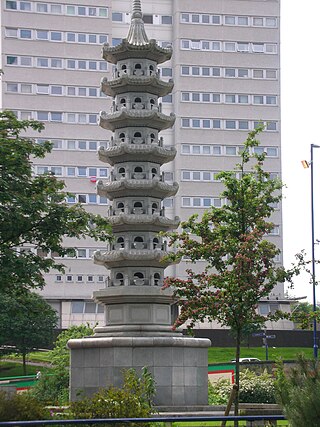
The Chinese Pagoda is a landmark in Birmingham, England. It is a 40-foot granite carving of a Chinese pagoda, carved in Fujian, China and donated to the city by the Wing Yip brothers, founder of a local Chinese supermarket chain, in thanks to the city and its people for providing a home for them and their families and for the city's support over the years.

1–7 Constitution Hill in Birmingham, England is a Grade II listed building at the acute junction with Hampton Street, and is a former H.B. Sale factory. The red brick and terracotta structure is extremely thin, with a tower at one end.
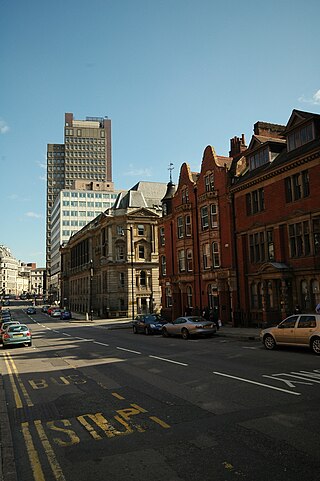
Newhall Street is a street located in Birmingham, England.
Smithfield was an inner-city area of Birmingham, England, southeast of the Bull Ring markets.
Vivid was a centre for the production and exhibition of media art, located in the Digbeth area of Birmingham, England.

Birmingham is a city and metropolitan borough in the metropolitan county of West Midlands in England. It is the second-largest city in the United Kingdom with a population of 1.145 million in the city proper, 2.92 million in the West Midlands metropolitan county, and approximately 4.3 million in the wider metropolitan area. It is the largest UK metropolitan area outside of London. Birmingham is commonly referred to as the second city of the United Kingdom.

Birmingham City Centre, also known as Central Birmingham and often known locally as town, is the central business district of Birmingham, England. Following the removal of the Inner Ring Road, the city centre is now defined as being the area within the Middle Ring Road. The city centre is undergoing massive redevelopment with the Big City Plan, which means there are now nine emerging districts and the city centre is approximately five times bigger.
Smith and Pepper was a jewellery manufacturing firm in Birmingham, England, which traded between 1899 and 1981. The factory is now the Museum of the Jewellery Quarter.
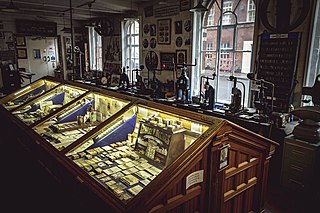
The Pen Museum is a museum in Birmingham, England, covering the history of Birmingham's steel pen trade. The only museum in the United Kingdom devoted to the history of the pen making industry, the Pen Museum explains how Birmingham became the centre of the world pen trade.

Southside is a new name for the district in the city centre of Birmingham, England. It contains the Chinese Quarter, the city's Gay Village, The Arcadian and the Hippodrome Theatre.

The Birmingham Gay Village is an LGBT district or "gaybourhood" next to the Chinese Quarter in Birmingham city centre, centred along Hurst Street, which hosts many LGBT-friendly businesses. The village is visited by thousands of people every week and has a thriving night life featuring clubs, sports bars, cocktail bars, cabaret bars and shops, with most featuring live entertainment including music, dancing and drag queens.

Ringway Centre is a Grade B locally listed building located on Smallbrook Queensway in the city centre of Birmingham, England. The six-storey, 230 metres (750 ft) long building was designed by architect James Roberts as part of the Inner Ring Road scheme in the 1950s and is notable for its gentle sweeping curved frontal elevation.

